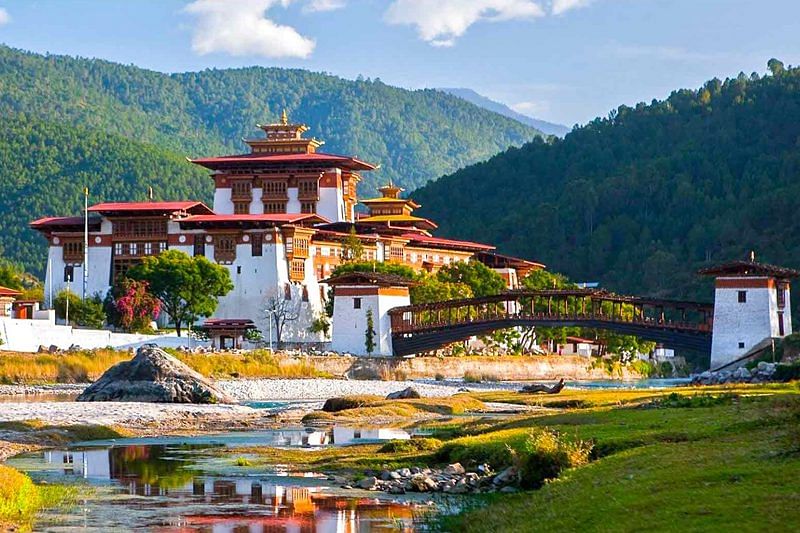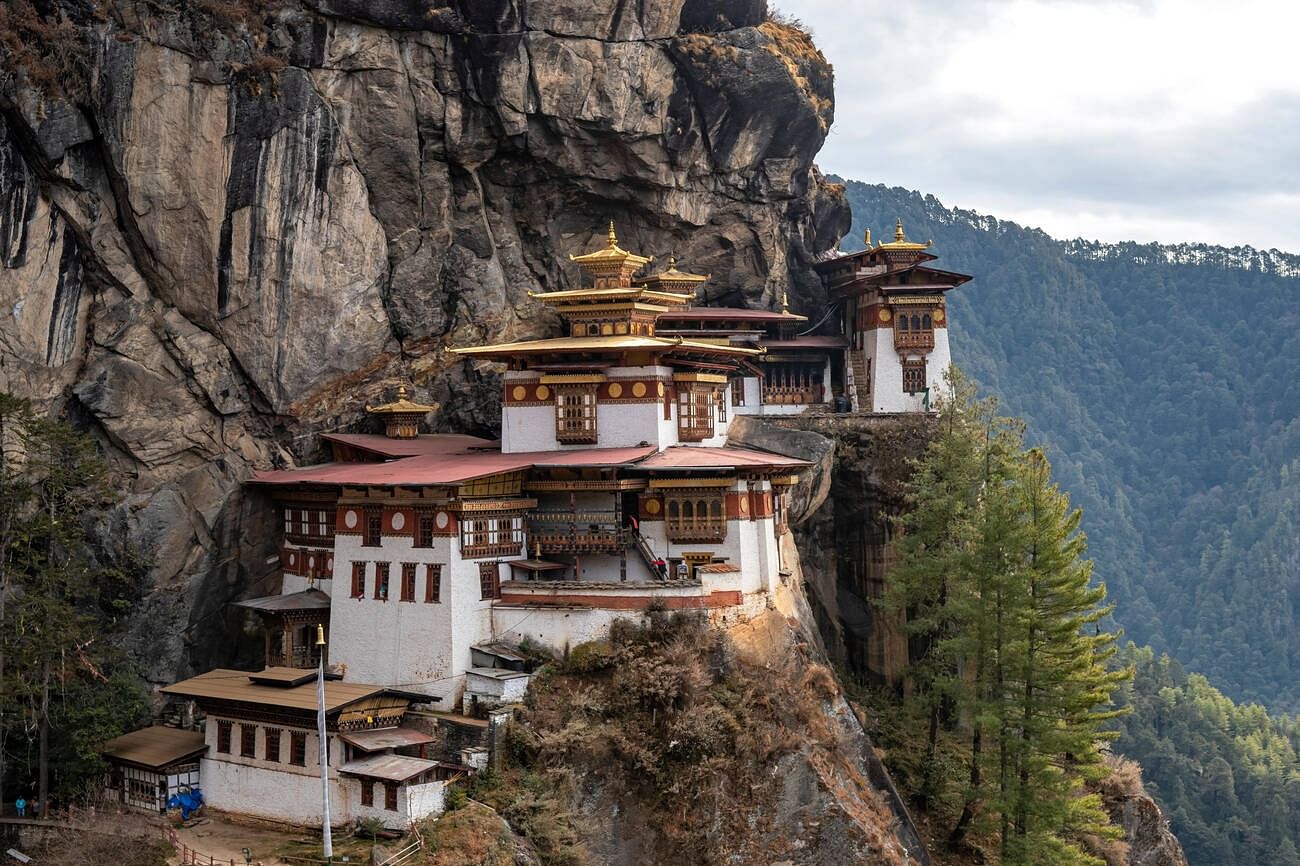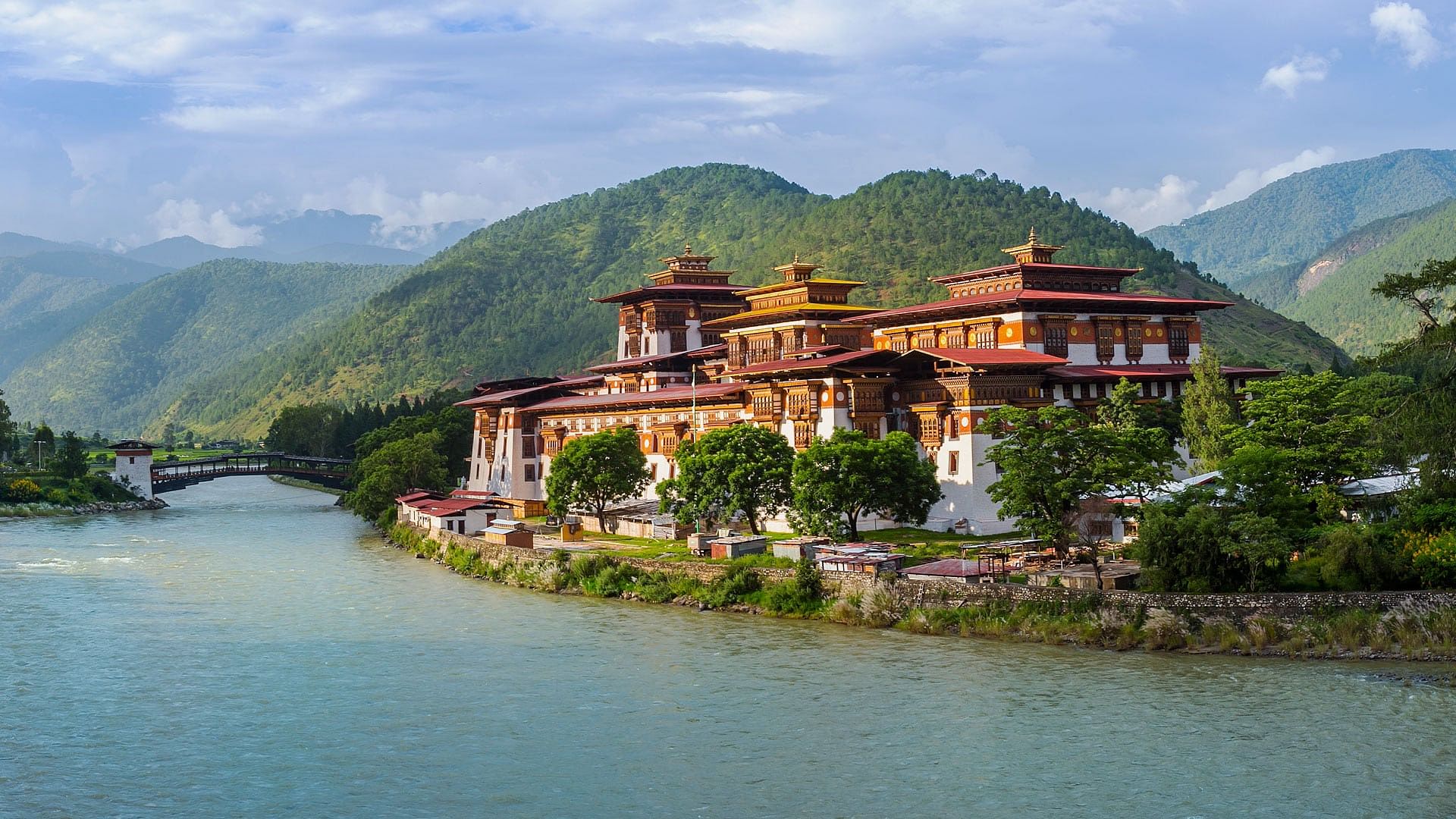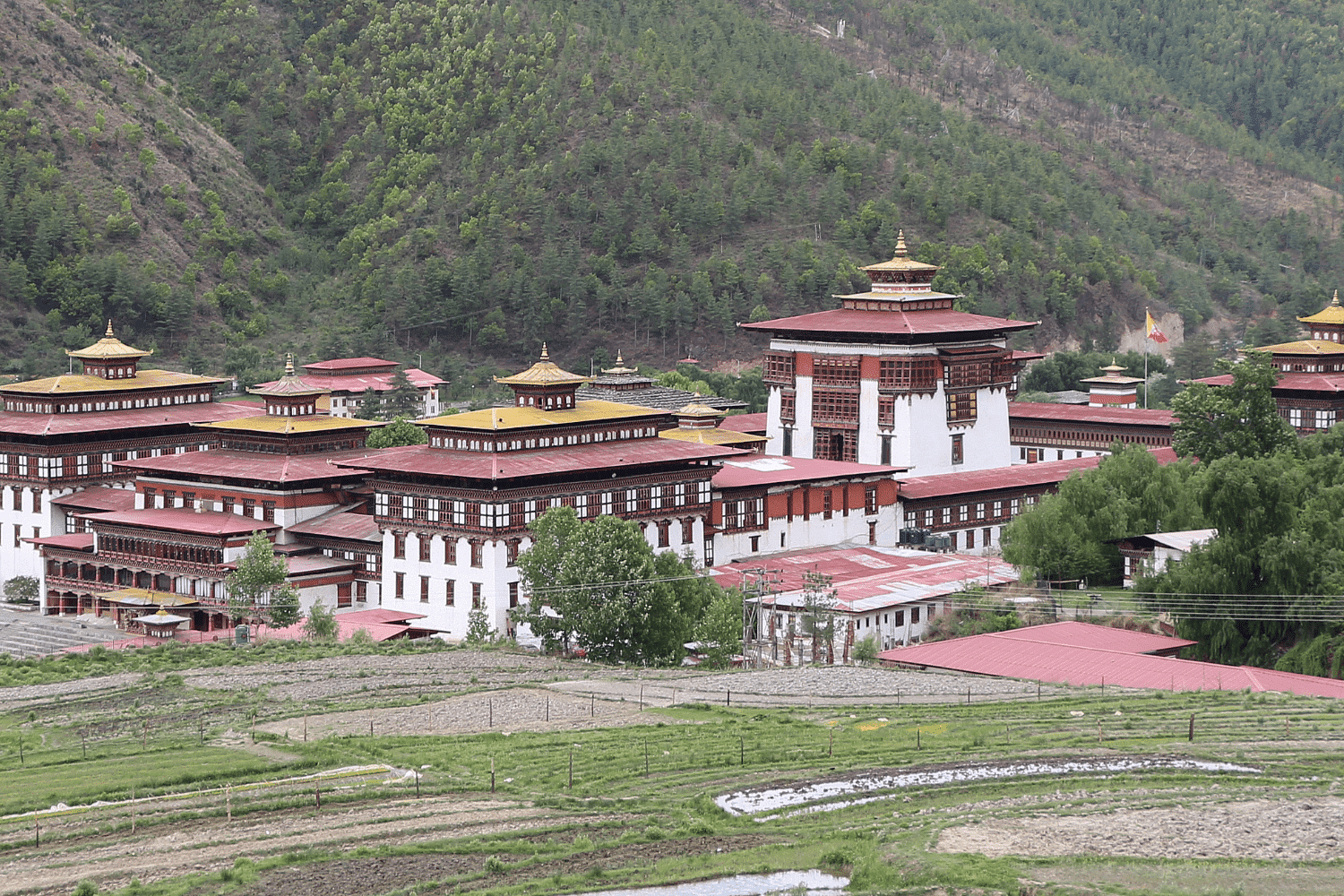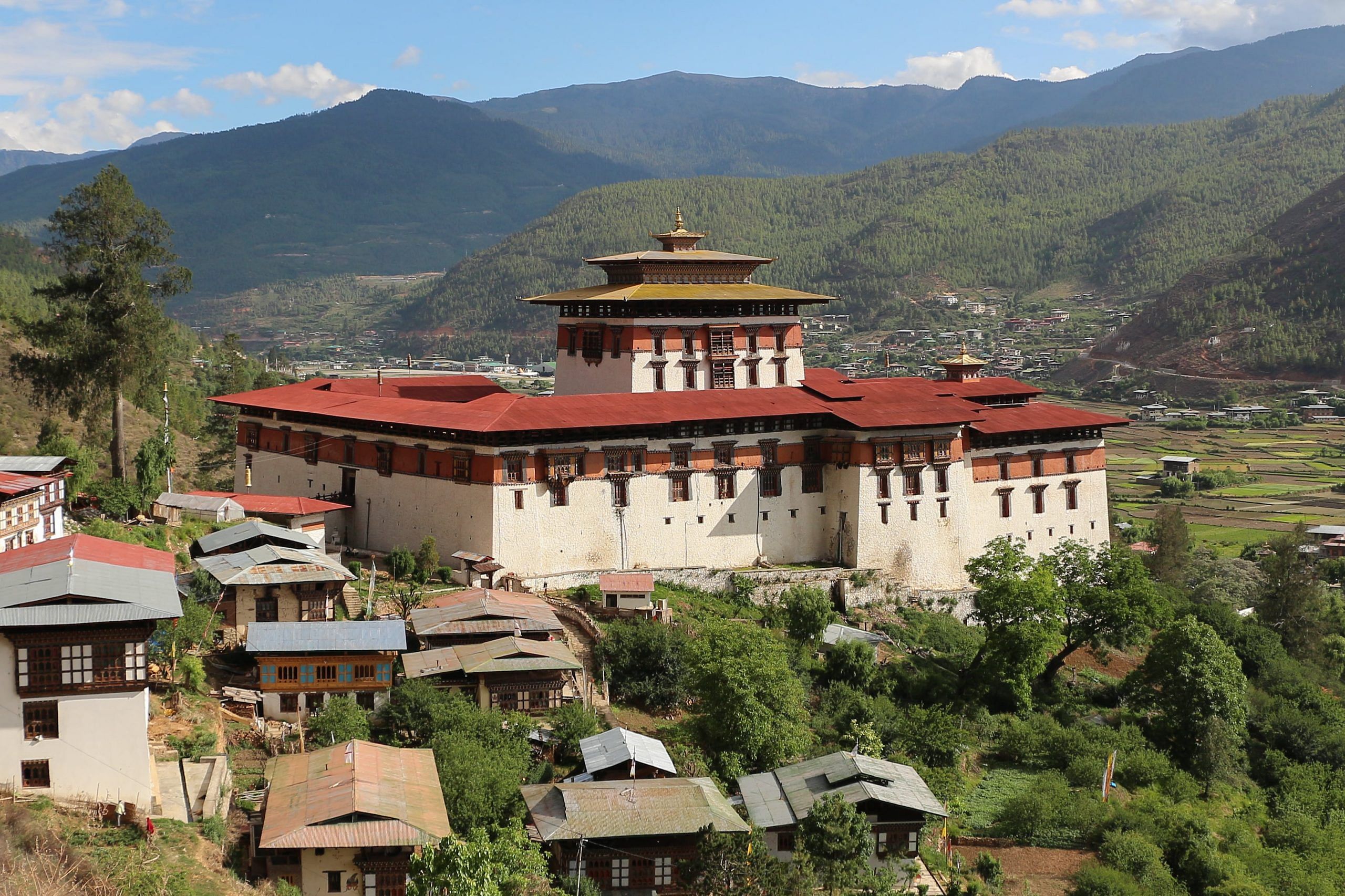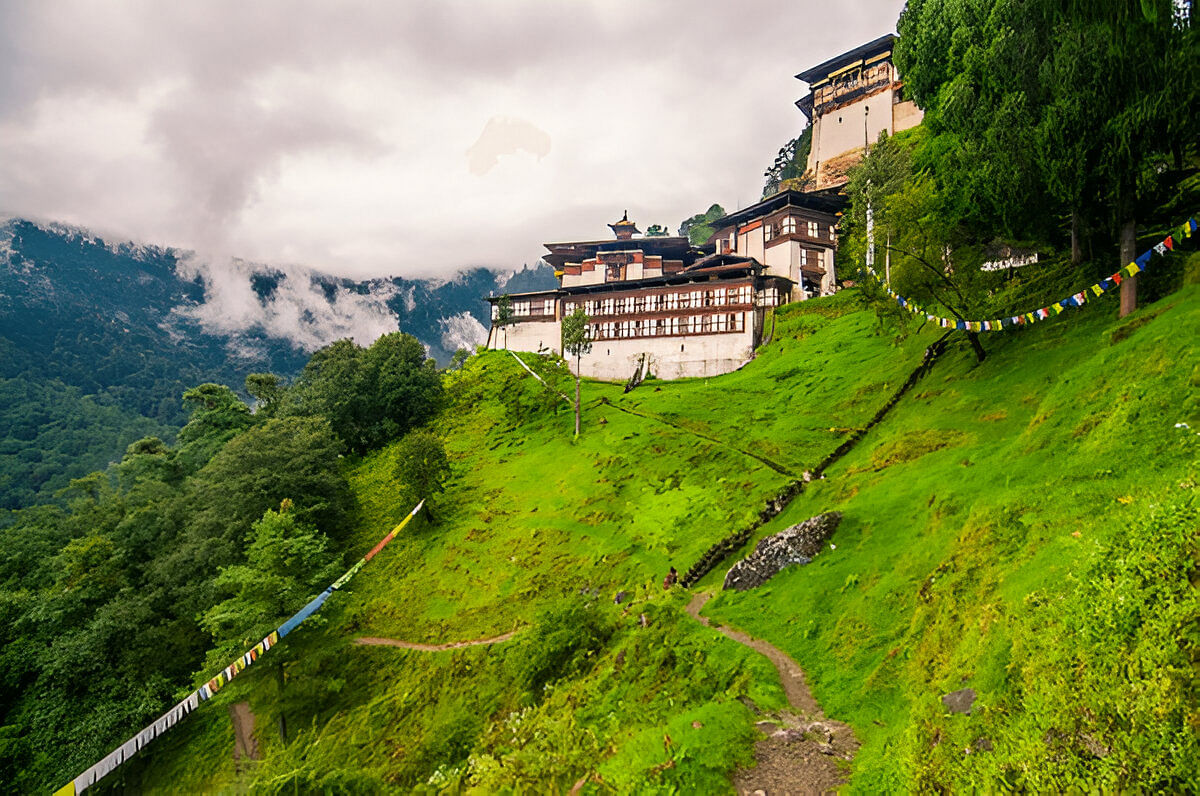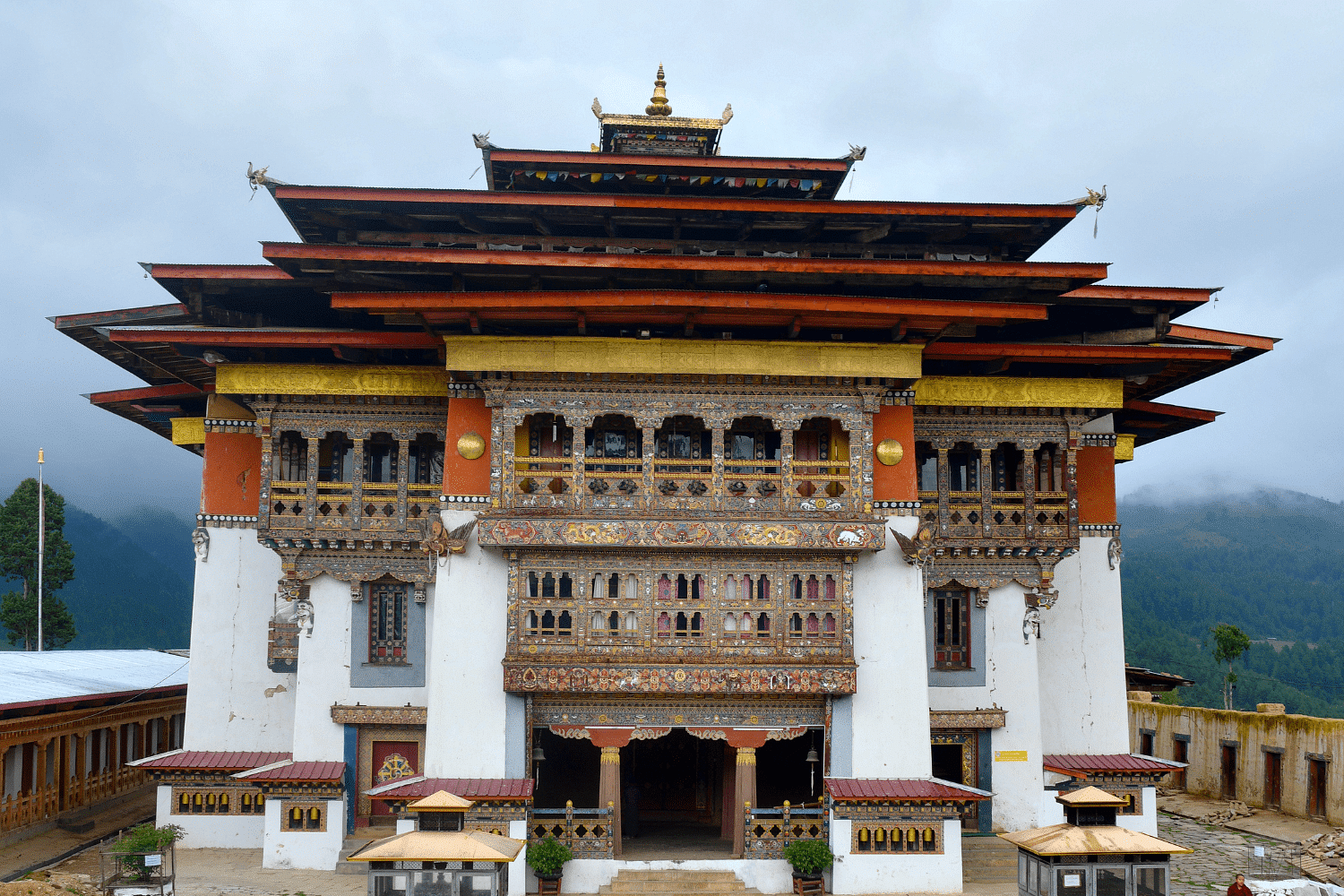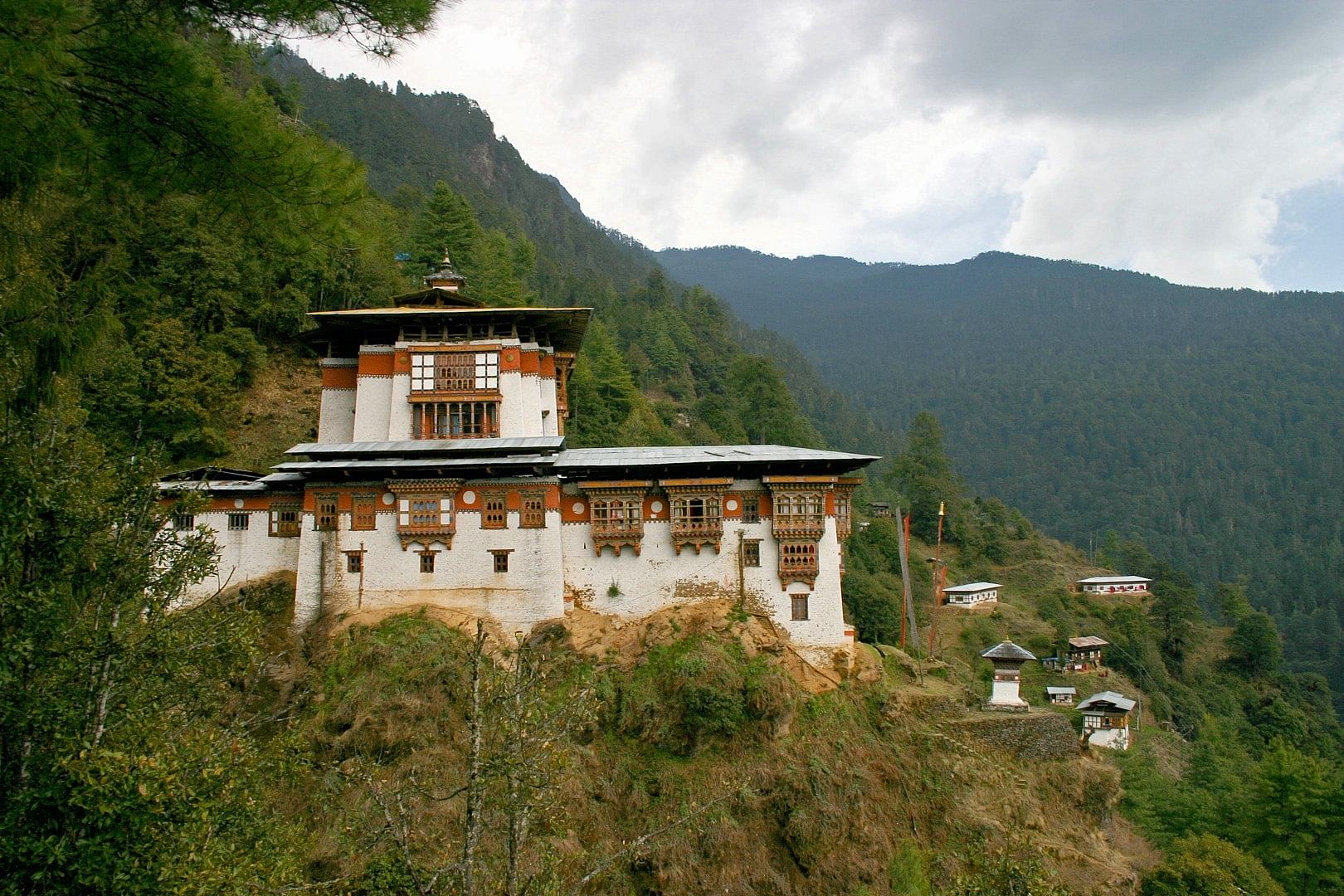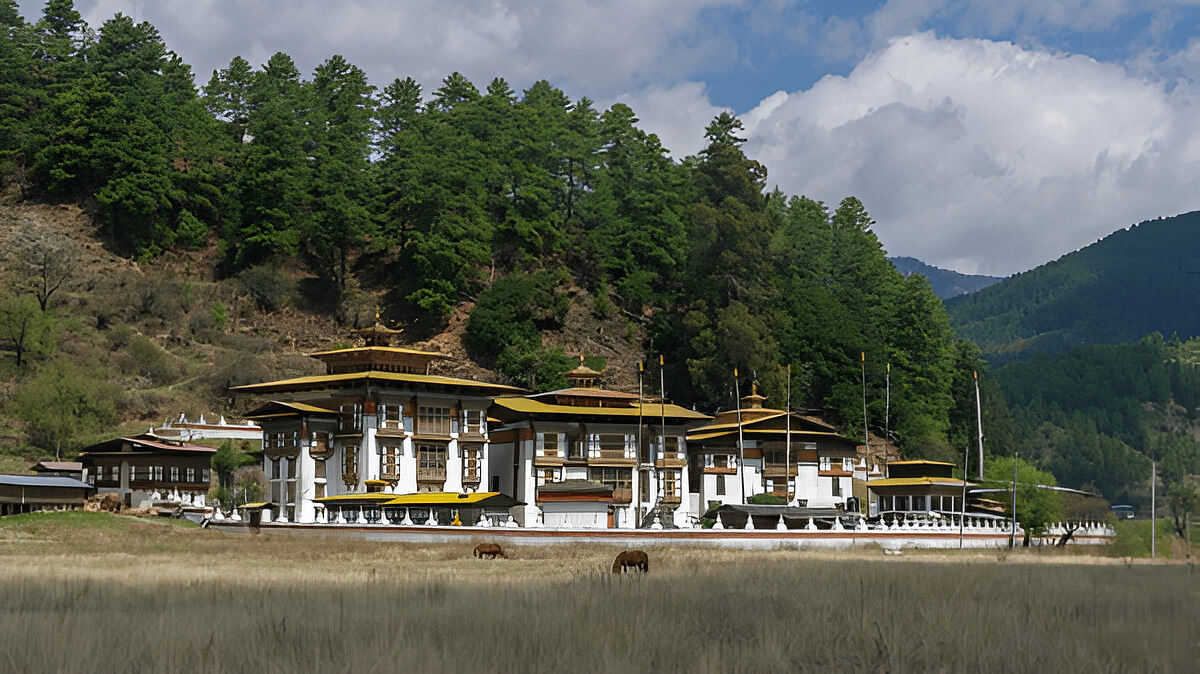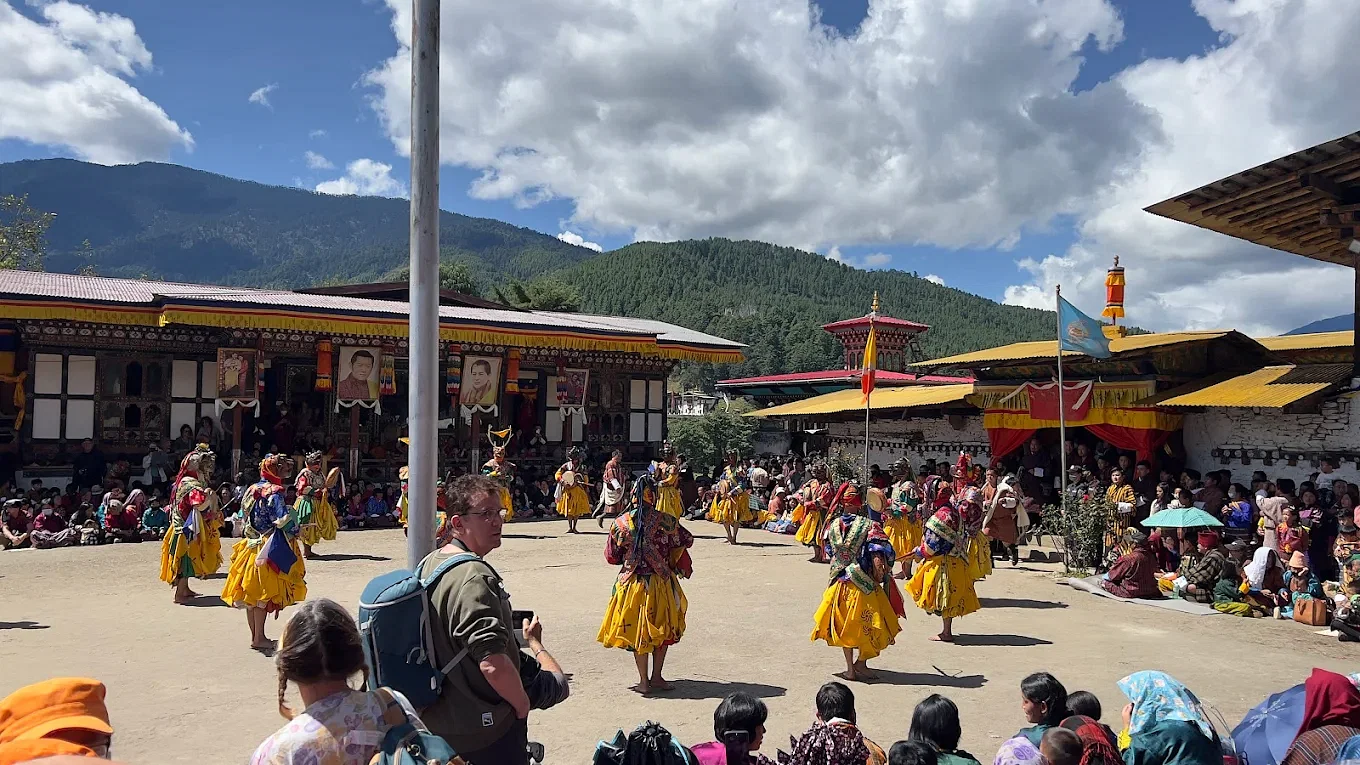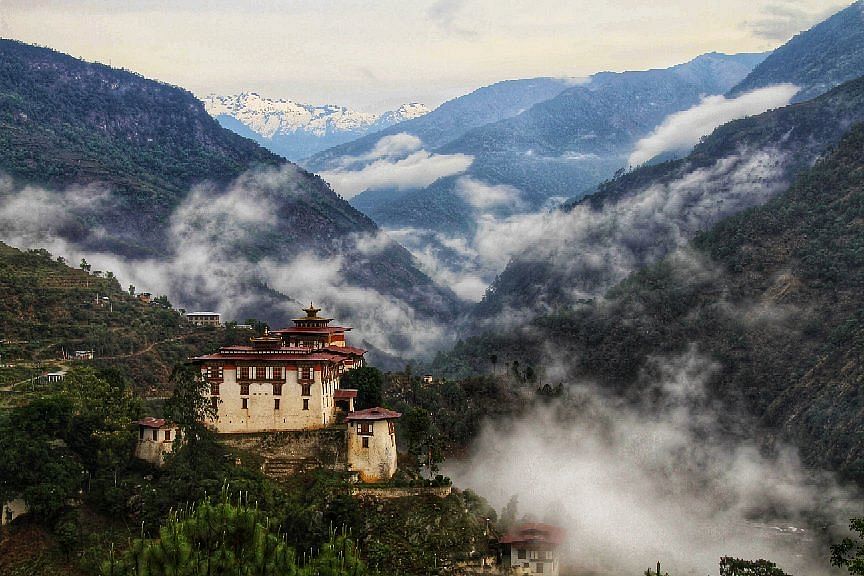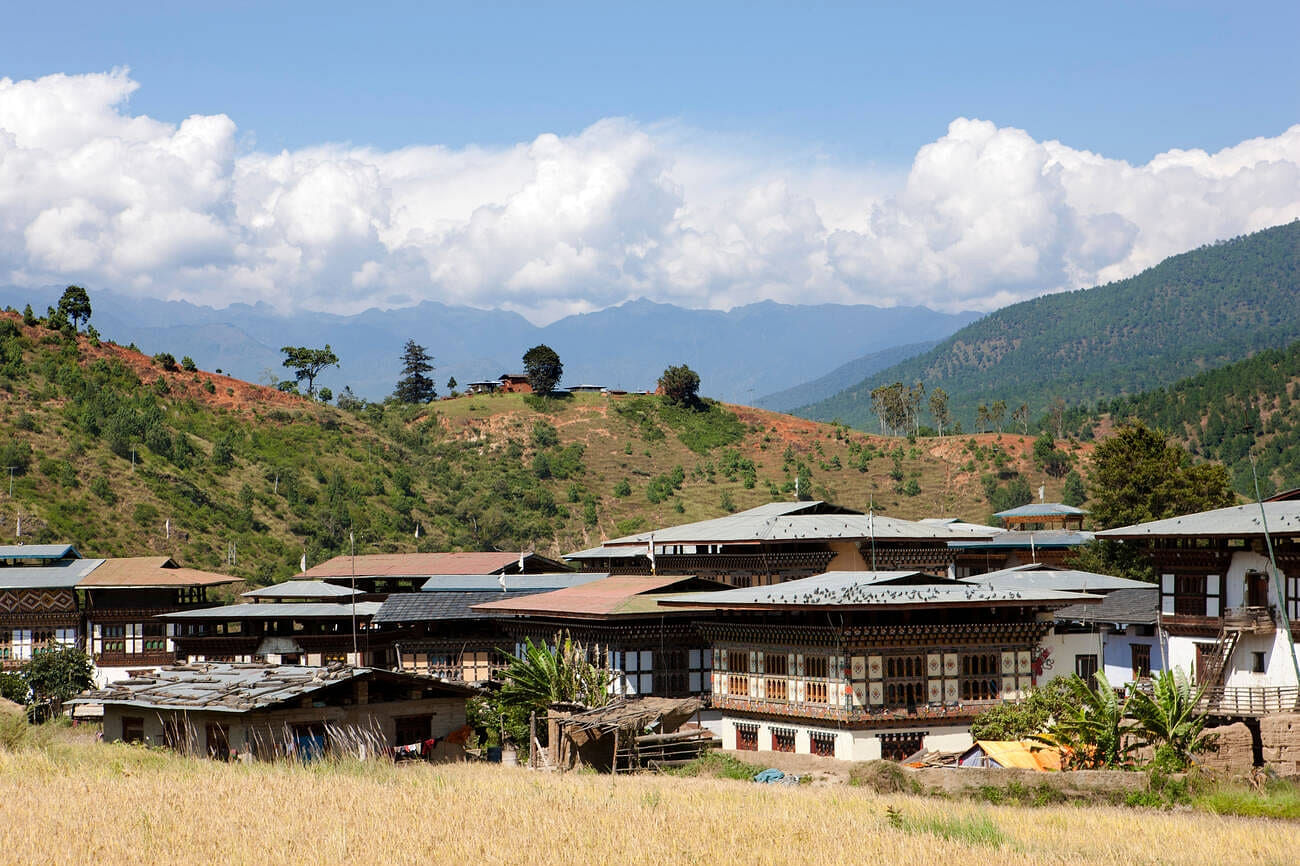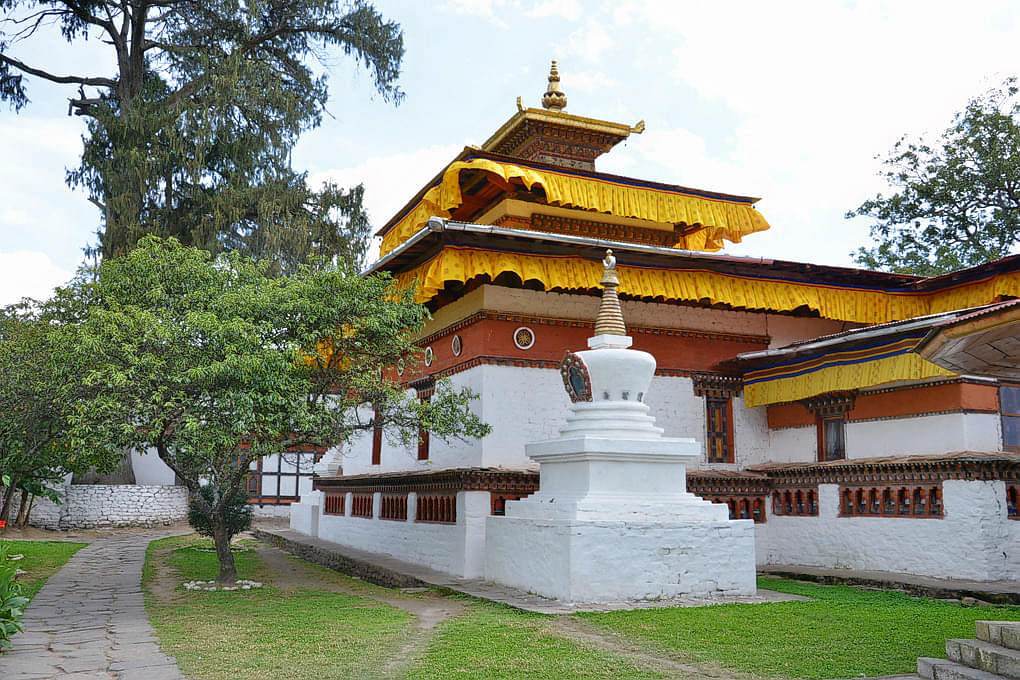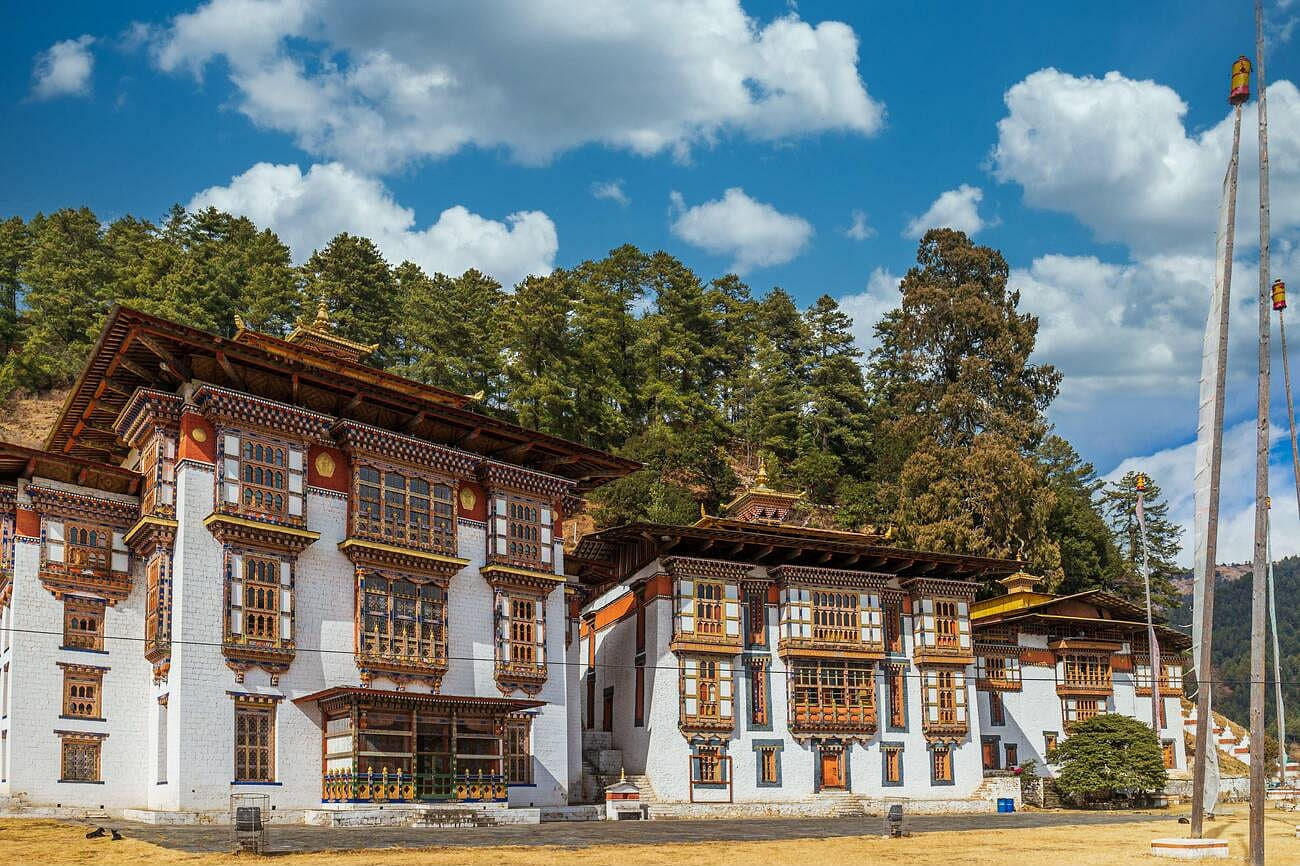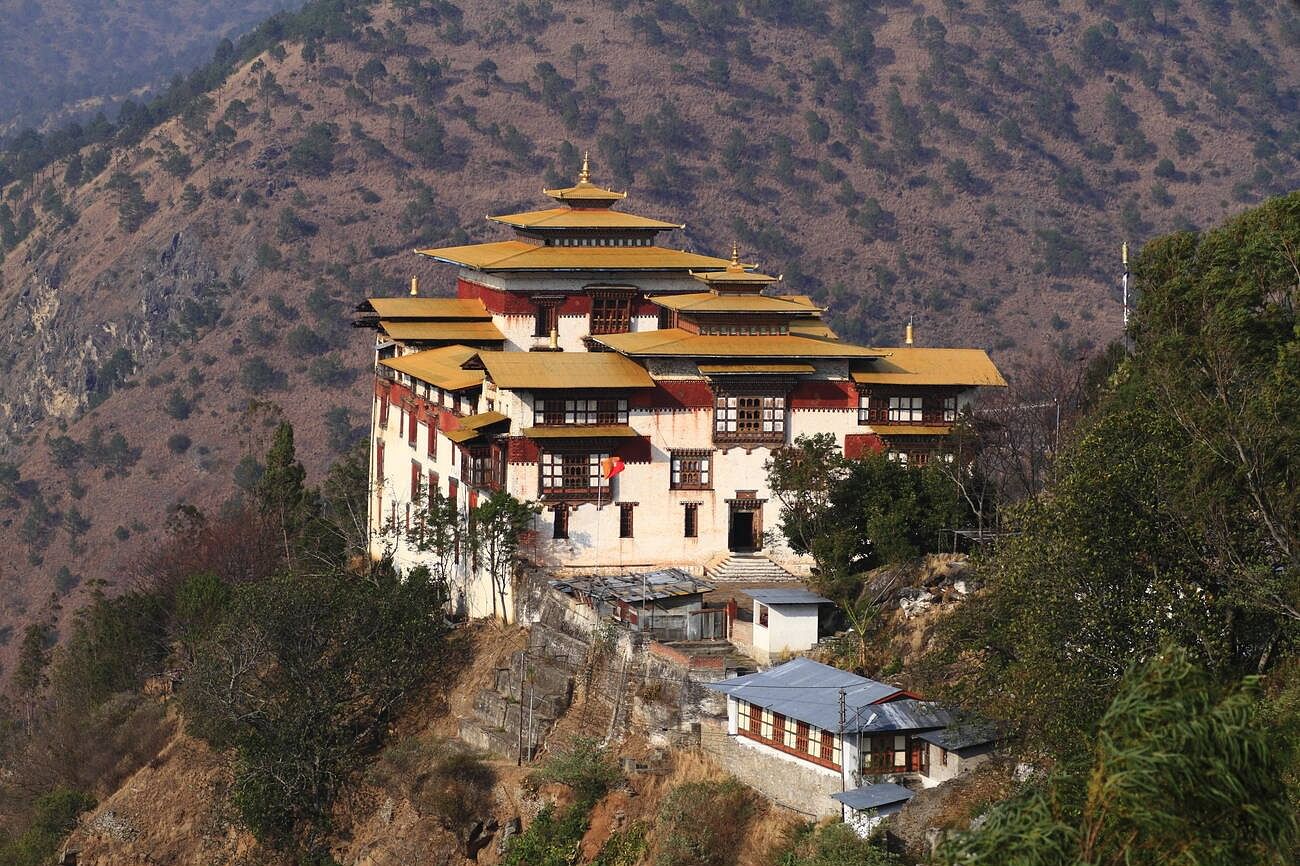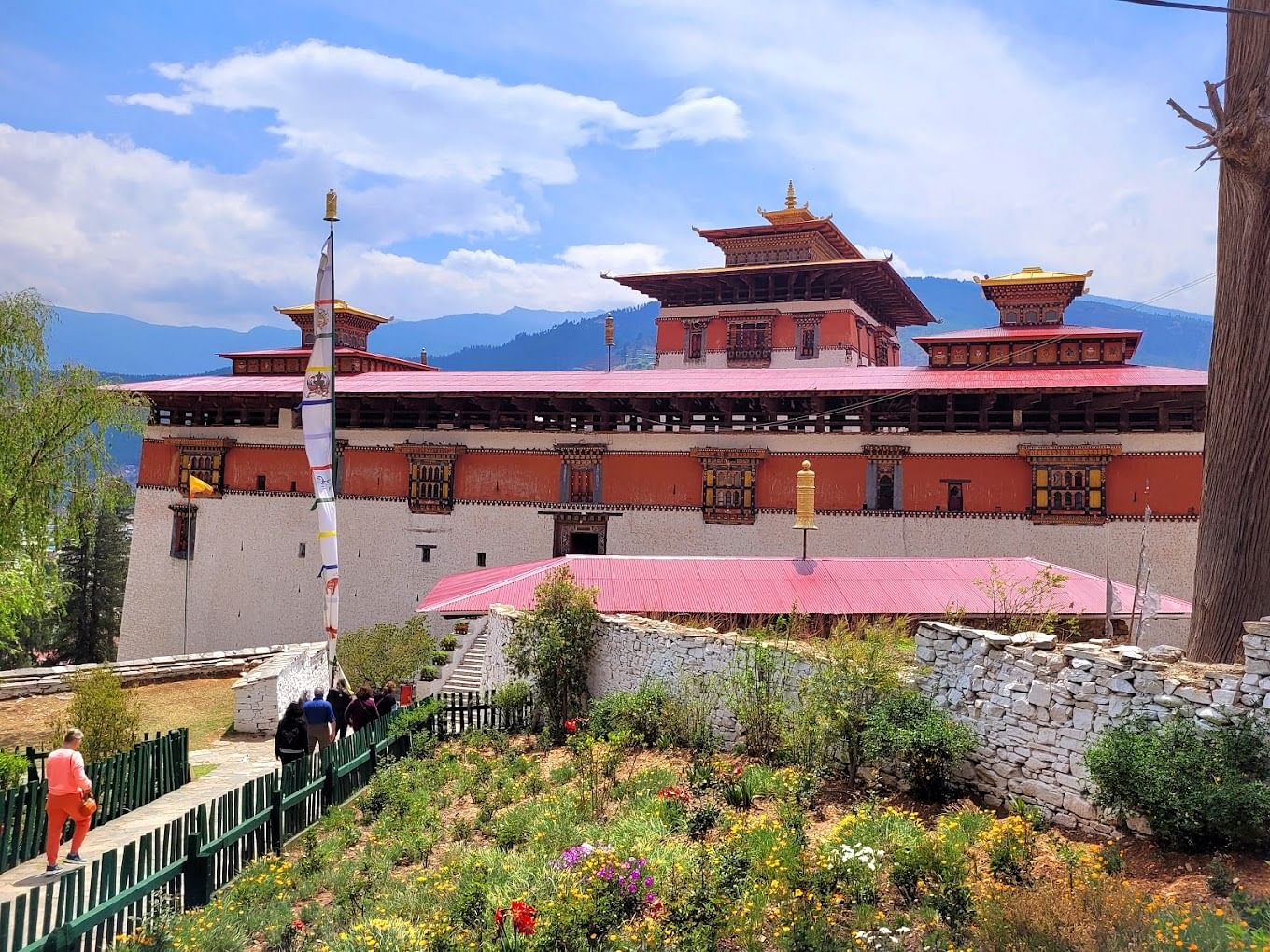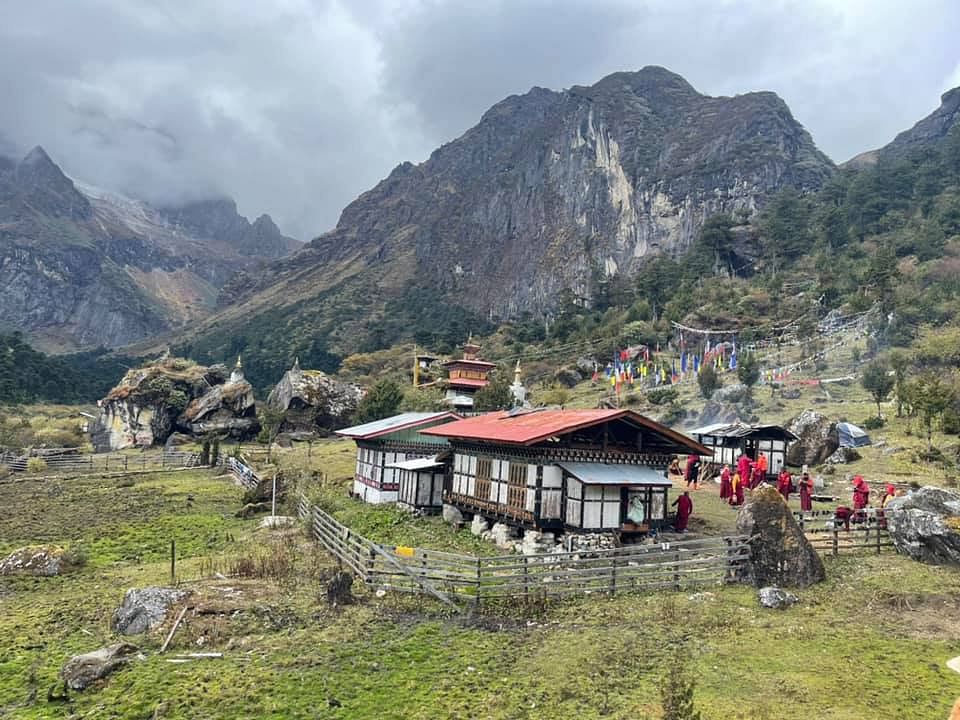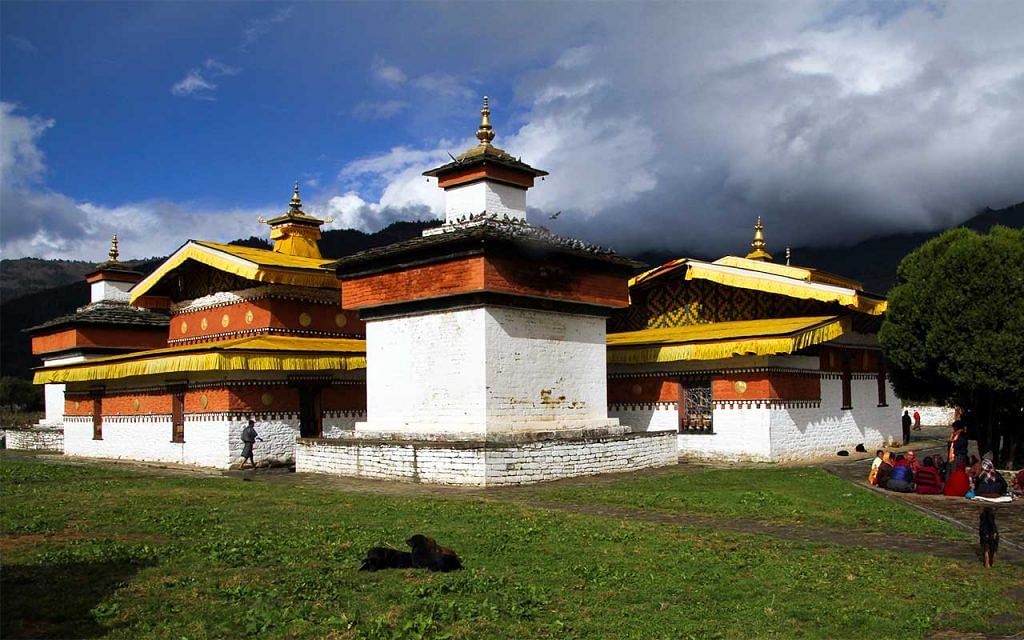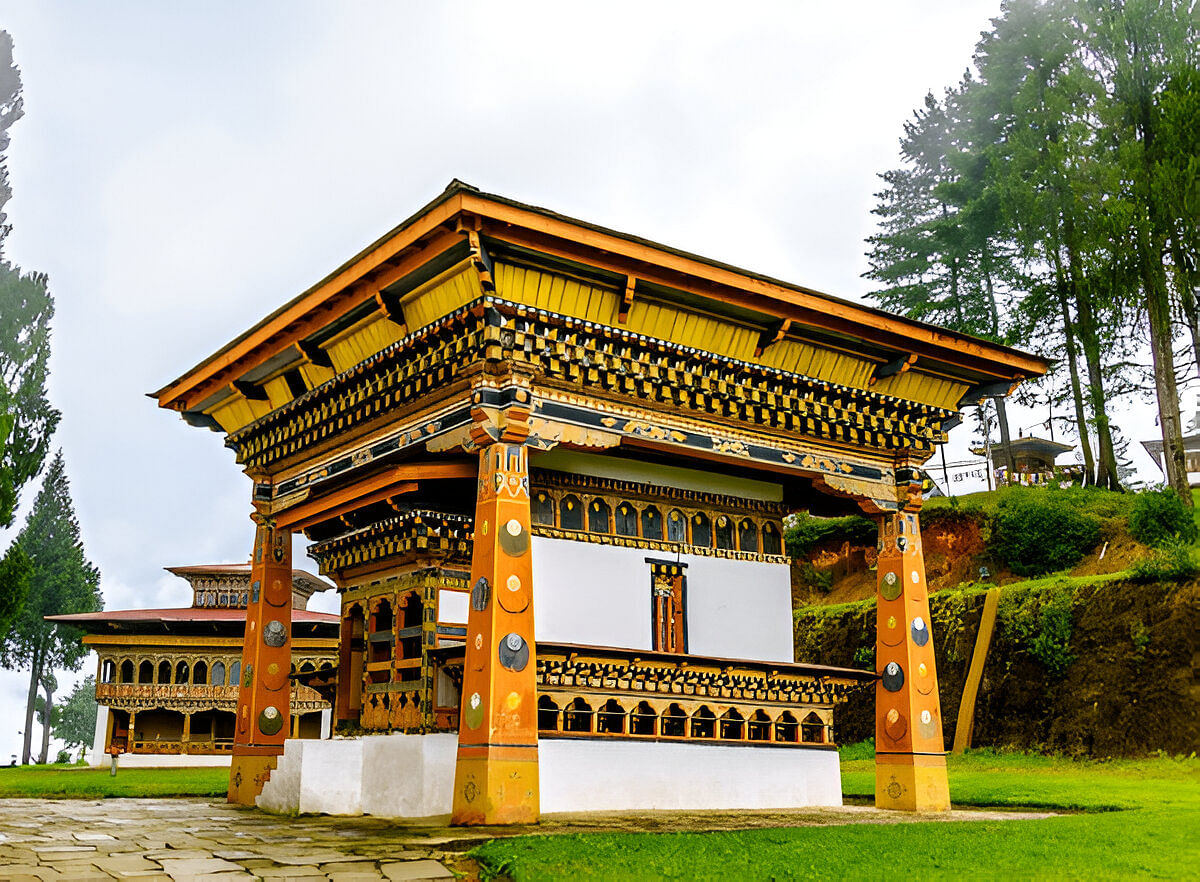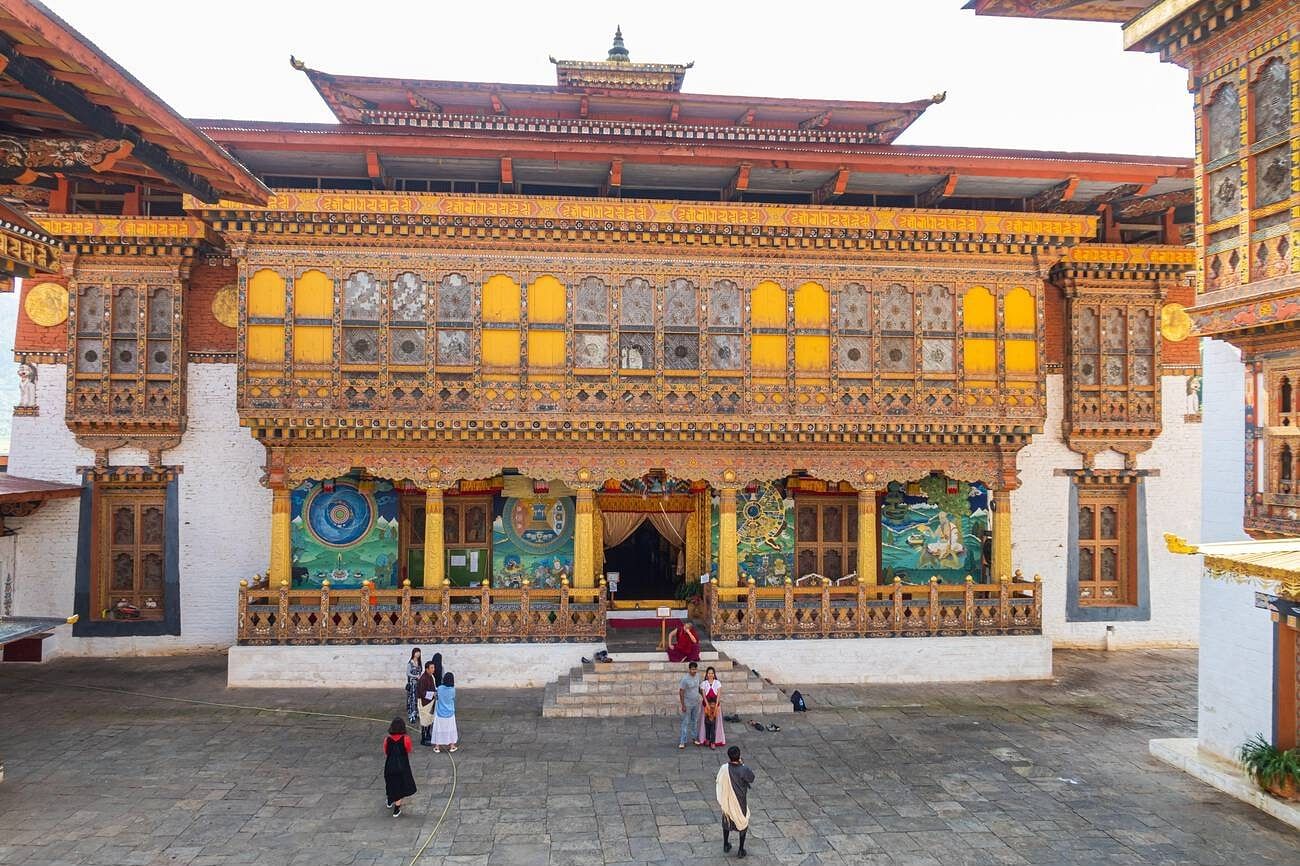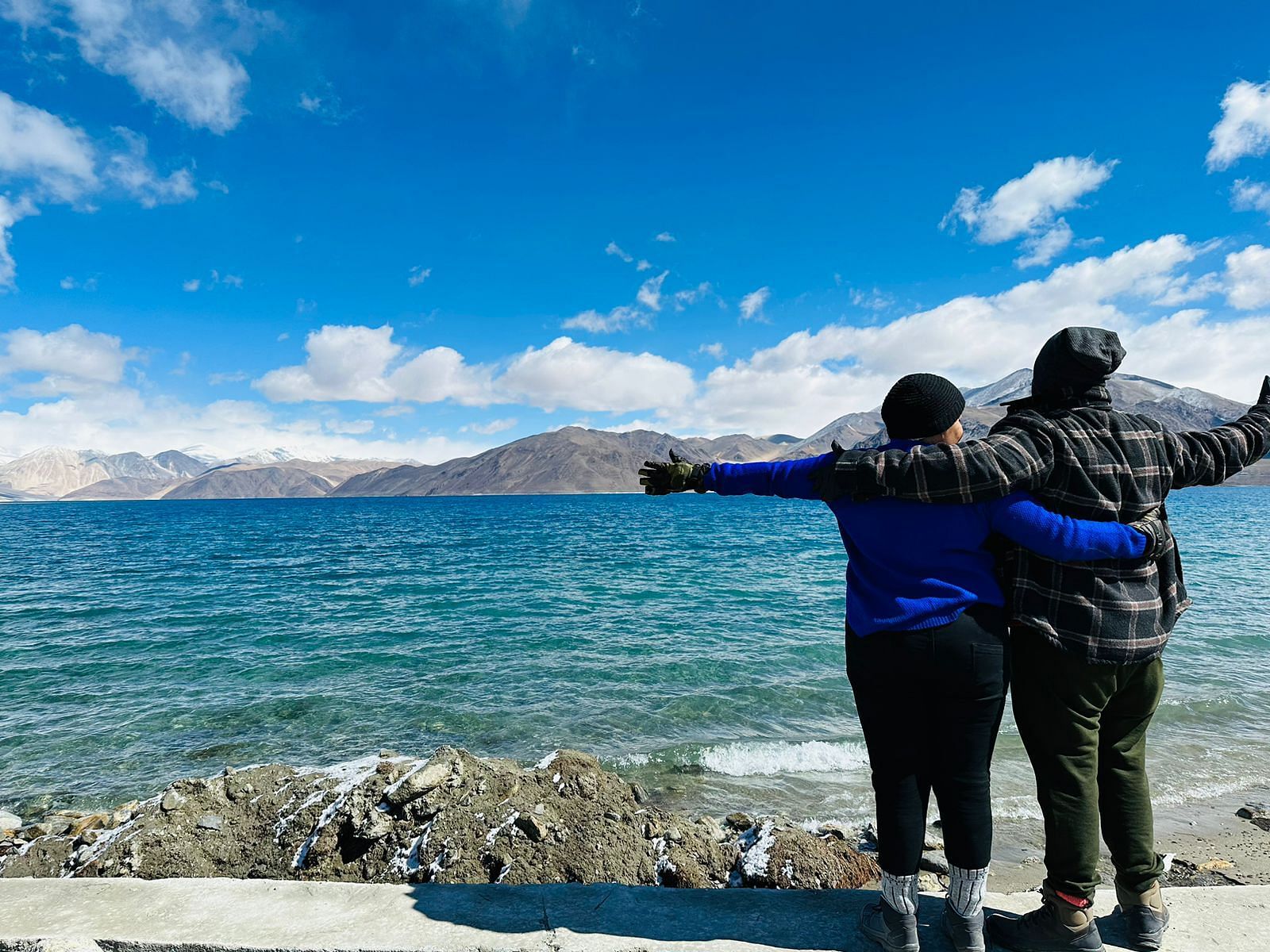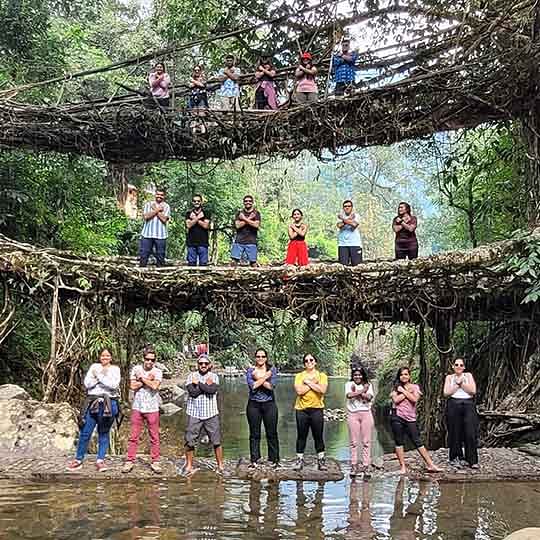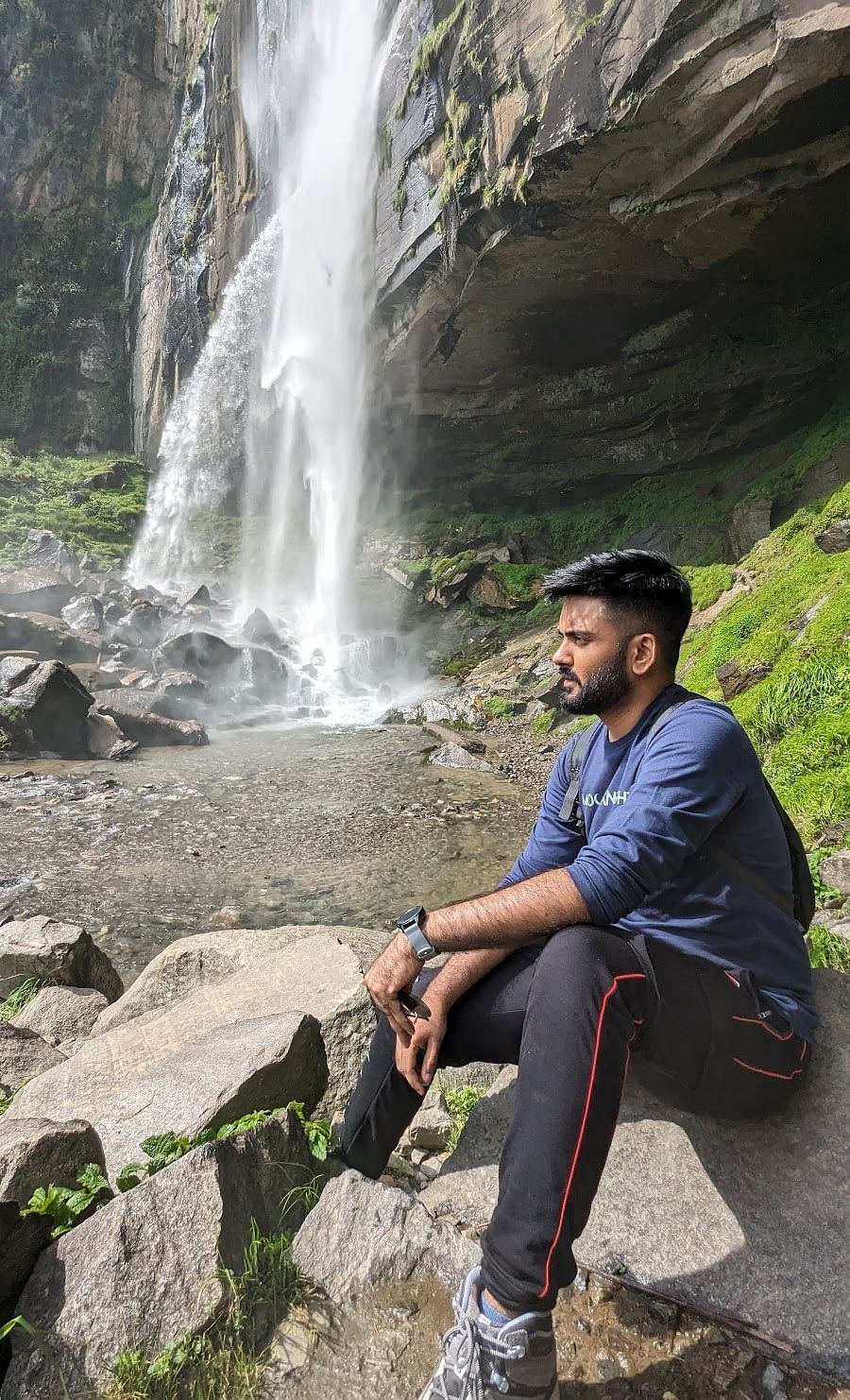Bhutan's got these monasteries that'll blow your mind. We're talking about Monasteries in Bhutan that are not like any temples you've ever seen before.
Take Tiger's Nest - some mad person thought they'd place a monastery on a cliff. And it worked. We went hiking up there last year and couldn't believe people actually live there. The monks just hang out with visitors as if it's no big thing.
These are hands down the top places to see in Bhutan. You walk in and boom - incense greets you, floors are smoothed by centuries of foot traffic, and there's always some monk doing something fascinating. One guy was repairing his motorcycle just outside the prayer hall.
The best thing about it? It's not a tourist show. These people are just going about their lives, praying, studying, texting their buddies. Real life takes place in ancient buildings.
Planning a trip? Our Bhutan Tour Packages take care of everything. Much easier than doing it yourself.
Best Monasteries in Bhutan for Tourists
1. Paro Taktsang Monastery (Tiger's Nest Monastery)
The Paro Taktsang monastery Bhutan, or Tiger Nest monastery, is the most famous and visited corner in the entire Bhutan. It’s a hallmark of the nation’s spiritual legacy and clings to a cliff 3,000 feet above Paro Valley. As Bhutan’s primary monastery, the Paro Taktsang has a very rich and unique history. It is believed to have been visited by Tibet’s Guru Rinpoche around 750, and later, a prominent monk thoroughly documented the visit as well.
Monasteries also have myths and stories surrounding them, and Bhutan Tiger Nest Monastery is famous for having great legends and sacred stories along with a rich history for tourists. As soon as you start the hiking tour, you’ll notice that the air while hiking is both fresh and rich, and as a whole, the experience is unforgettable. Coupled with the scenic beauty of the area, it is a wonderful package since the deep and serene meditation allows one to completely disconnect. Paro’s shrine truly makes it distinct among the many others in Bhutan.
- Location: Cliffside above Paro Valley
- Famous For: Stunning views, sacred meditation site of Guru Rinpoche
- Entry Fee: INR 500 for foreigners
- Timings: 8 AM to 5 PM
Punakha Dzong is considered to be one of the grandest and most significant Bhutan monasteries of great historical and religious significance. It was constructed in the year 1637, where it is located at the confluence of two rivers, the Pho Chhu and Mo Chhu.
It is the second-oldest and the second-largest dzong in the country. It is an epitome of a traditional Bhutan monastery, having whitewashed walls, red and gold roofs, and a fine collection of Bhutanese arts. It is home to an annual Punakha Tshechu festival attended by monks and locals wearing colourful costumes. It has a calming environment and is spiritual in nature, hence a big attraction to tourists. It is one of the best places within the monastery of Bhutan.
Tashichho Dzong is situated in Thimphu and is the centre of the Bhutanese government as well as the summer home of the Chief Abbot. This was constructed in the 17th century and rebuilt severally times due to destruction and is characterised by its majestic nature and peace. It has a body of monks and administrative offices, unlike most of the other Bhutan monasteries.
It is a place with well-kept gardens and typical Bhutanese architecture that is a place not to be missed. Bhutanese monks come here to execute their daily rituals, and this is what shows the spiritual routine of the country. Tashichho Dzong is a cultural centre as well as a religious one that mirrors a harmonious combination of rulership and spirituality that Bhutan is.
- Location: Thimphu
- Famous For: Government functions, summer residence of the central monk body
- Entry Fee: INR 300 for foreigners
- Timings: 5:30 PM to 6:30 PM (weekdays), 8 AM to 6 PM (weekends)
4. Rinpung Dzong (Paro Dzong)
Rinpung Dzong, also known as the Fortress on a Heap of Jewels, stands proudly above the Paro Valley. Built in the 17th century, this Bhutan monastery is famous for its beautiful murals, massive wooden beams, and traditional courtyards. It houses both the monastic body and administrative offices of Paro.
The annual Paro Tsechu festival, one of Bhutan’s grandest celebrations, takes place here. Visitors can walk across a charming wooden bridge to reach the dzong, which offers great views of the surrounding valley. With its spiritual significance and cultural richness, Rinpung Dzong is one of the must-see monasteries in Bhutan.
- Location: Paro
- Famous For: Annual Paro Tshechu festival, historical importance
- Entry Fee: INR 300 for foreigners
- Timings: 8 AM to 6 PM
Cheri Monastery is located just north of Thimphu and is a peaceful retreat in the mountains. Founded in 1620 by Ngawang Namgyal, it was the first Buddhist monastery in Bhutan to be built by him. The hike to the monastery passes through a forested trail full of prayer flags and scenic views.
It’s a place for meditation and solitude, making it ideal for those seeking peace and reflection. Monks often come here for retreats and spiritual practice. As the oldest monastery in Bhutan, founded by the Zhabdrung, Cheri Monastery has deep historical roots and offers a quiet glimpse into the early days of Buddhism in Bhutan.
- Location: Dodeyna, 15 km north of Thimphu
- Famous For: First Buddhist monastery in Bhutan, founded by Zhabdrung Ngawang Namgyal in 1620
- Entry Fee: ₹400 (INR 400)
- Timings: 9:00 AM – 5:00 PM
Gangtey Monastery, located in the beautiful Phobjikha Valley, is one of the major centres of the Nyingma school of Buddhism. Surrounded by forested hills and home to the rare black-necked cranes, this monastery is both a spiritual and natural haven. It was established in the 17th century and recently underwent restoration. The main hall is decorated with stunning murals and religious artefacts. During the annual Tsechu festival, the monastery comes alive with colourful dances and rituals. For those interested in the spiritual heart of Bhutan, this is a must-visit site among the top monasteries in Bhutan.
- Location: Phobjikha Valley
- Famous For: Scenic location, Black-necked Crane Festival
- Entry Fee: INR 300 for foreigners
- Timings: 9 AM to 5 PM
Tango Monastery is a short drive and hike from Thimphu. It serves as an important centre for higher Buddhist studies in Bhutan. The monastery was built in the 17th century and sits in a peaceful location surrounded by nature. The hike up takes you through pine forests with prayer wheels and fluttering flags.
Monks in Bhutan train here, and it’s often a retreat spot for spiritual teachers. The combination of academic learning and serene surroundings makes it unique among Bhutan monasteries. Visitors can interact with monks and learn about the spiritual teachings passed down through generations.
- Location: 14 km north of Thimphu, Bhutan
- Famous For: Buddhist learning centre, meditation caves, sacred horse-head rock
- Entry Fee: Free
- Timings: 7:00 AM – 11:00 AM (best to visit early morning)
Located in Bumthang, Kurjey Lhakhang is one of the most sacred sites in Bhutan. It houses a cave where Guru Rinpoche is said to have meditated and left his body imprint. The temple complex has three main temples, each representing a different period of Bhutanese history.
The peaceful setting, surrounded by cypress trees and mountains, enhances the spiritual aura. Pilgrims from all over the country visit Kurjey Lhakhang to pay their respects. This Buddhist monastery in Bhutan is especially important during religious festivals, when rituals and dances take place to honour the sacred legacy.
- Location: Bumthang Valley
- Famous For: Guru Rinpoche’s body imprint
- Entry Fees: Free
- Timings: 6:00 AM – 6:00 PM
Also located in Bumthang, Tamzhing Monastery was founded by the great spiritual master Pema Lingpa in the 16th century. It is a centre of Bhutanese spiritual art and tradition, preserving ancient wall paintings and relics. The monastery is a hub for cultural and spiritual life in the region. Despite its modest size, it has deep spiritual energy.
Visitors often feel a sense of calm and connection when they visit. The monks here continue age-old practices and chants, keeping Bhutan’s spiritual roots alive. Tamzhing is a hidden gem among the many monasteries in Bhutan.
- Location: Bumthang Valley, near Jakar
- Famous For: Founded by Saint Pema Lingpa; known for ancient murals and Nyingma teachings
- Entry Fee: ₹500 (for foreigners)
- Timings: 9:00 AM – 5:00 PM
Lhuentse Dzong is located in a remote part of eastern Bhutan and is known for its scenic location on a hilltop overlooking the Kuri Chhu river. Though less visited, it holds great significance in Bhutanese history, especially for the royal family, whose ancestral roots are here.
The dzong is both a fortress and a monastery, with monks residing and studying within its walls. It’s a great example of traditional Bhutanese architecture. Those who make the journey are rewarded with untouched beauty and a deep sense of spiritual tranquillity.
Chimi Lhakhang, also known as the Fertility Temple, is a popular monastery in Bhutan located near Punakha. It was built in the 15th century by the “Divine Madman,” Lama Drukpa Kunley. Known for his unorthodox teachings and behaviour, he used humour and unconventional methods to spread Buddhism.
This monastery in Bhutan is visited by couples who wish to have children, and many believe that praying here brings blessings of fertility. The temple is surrounded by rice fields, and a short walk through the village offers a glimpse into local life. The peaceful setting and unique history make Chimi Lhakhang one of the most special Bhutan monasteries.
- Location: Lobesa, Punakha
- Famous For: Fertility blessings, Divine Madman legends
- Entry Fee: Free
- Timings: 8 AM – 5 PM
Kyichu Lhakhang is one of the oldest monasteries in Bhutan, originally built in the 7th century by the Tibetan King Songtsen Gampo. It is located near Paro and holds great religious importance. According to legend, it was built to subdue a demoness lying across the Himalayas. The temple complex has a peaceful garden and prayer wheels that are always spinning by devoted pilgrims. The inner sanctum houses a statue of Jowo Jampa (the future Buddha). This oldest monastery in Bhutan continues to be an important place of worship and pilgrimage. It is a serene spot filled with centuries of devotion and faith.
- Location: Paro, Western Bhutan
- Famous For: One of Bhutan’s oldest temples, a sacred orange tree, and Guru Rinpoche relics
- Entry Fee: Free for locals & SAARC; INR 300–500 for others
- Timing: 9:00 AM – 5:00 PM
Jakar Dzong, also known as the Fortress of the White Bird, is located in Bumthang and is one of the largest dzongs in Bhutan. It serves as an administrative and religious centre. The site was chosen after a white bird landed there, which was considered a good omen. The dzong overlooks the Chamkhar Valley and is an active site for monks in Bhutan. With its tall watchtowers and open courtyards, it offers a peaceful yet powerful presence. The annual Jakar Tshechu is a colourful event held here.
- Location: Bumthang Valley, Central Bhutan
- Famous For: "Castle of the White Bird," historic fortress with valley views
- Entry Fee: Free (included in tourist package)
- Timings: 9 AM – 5 PM (Mon–Fri); closed on weekends/holidays
Located in eastern Bhutan, Trashigang Dzong is an important religious and administrative centre. Built in 1659, it played a role in defending the region from Tibetan invaders. It is one of the largest dzongs and is still used as a residence for monks and offices for local governance. The monastery stands above the Gamri River and provides a commanding view of the valley. It is a key stop for travellers exploring eastern Bhutan monasteries and offers a strong cultural experience.
- Location: Trashigang, Eastern Bhutan
- Famous For: Scenic hilltop setting and cultural significance in eastern Bhutan
- Entry Fee: Free (permit needed for tourists)
- Timings: 9:00 AM – 5:00 PM
Simtokha Dzong, built in 1629, is the oldest dzong in Bhutan and serves as an institute for Buddhist learning. It is located near Thimphu and blends historical value with spiritual education. The walls are decorated with hundreds of slate carvings of Buddhist deities. It played a major role in unifying Bhutan during its early formation. Students from all over the country come here to learn religious texts. For those exploring the history of Bhutan monasteries, Simtokha is a must-visit.
- Location: 5 km south of Thimphu
- Famous For: Oldest dzong in Bhutan, ancient wall paintings, and Dzongkha language school
- Entry Fees: Free (Foreigners: INR 300–500)
- Timings: 9:00 AM – 5:00 PM (Closed on public holidays)
16. Singye Dzong Monastery
Singye Dzong is one of the most remote and sacred monasteries in Bhutan. Reaching it requires a long trek through forests, mountains, and rivers, but the journey is deeply rewarding. This monastery is closely connected to Guru Rinpoche, who is believed to have meditated here.
The peaceful surroundings and deep spiritual energy make it a special place for those looking for inner peace. Few tourists visit due to its difficult location, which makes it feel untouched and pure. If you're up for an adventure, this is a life-changing destination among the monasteries in Bhutan.
- Location: Lhuentse District, Northeastern Bhutan
- Famous For: Sacred meditation site linked to Guru Rinpoche; scenic yet remote pilgrimage.
- Entry Fees: No entry fee. A permit is required for tourists.
- Entry Timing: Open all day; best visited early morning.
Jambay Lhakhang is one of the oldest temples in Bhutan and holds great religious value. Built in the 7th century by Tibetan King Songtsen Gampo, it's one of 108 temples said to be built to subdue a demoness. The temple has a beautiful statue of Maitreya Buddha and stunning murals.
Every year, the Jambay Lhakhang Drup festival draws large crowds, especially for the famous fire dance. The combination of history, belief, and tradition makes this place unforgettable. Monks in Bhutan regularly visit for rituals, and tourists love its peaceful vibes.
- Location: Bumthang Valley, Central Bhutan
- Famous For: Ancient structure and the colourful Jambay Lhakhang Drup festival.
- Entry Fees: Free entry.
- Entry Timing: 8:00 AM to 5:00 PM
Talo Monastery sits high above the Punakha Valley and is known for its clean, peaceful surroundings. It’s the seat of the Talo Gyaltsab, an important figure in Bhutanese Buddhism. The monastery is neat and well-kept, with gardens that bloom with flowers. It’s a lovely place for quiet moments and meditation. The annual Talo Tshechu is a colourful event with dances and rituals. This monastery is a great place to see the daily life of monks in Bhutan and enjoy Bhutanese culture at its purest.
- Location: Punakha District, Western Bhutan
- Famous For: Serene environment and annual Talo Tshechu festival.
- Entry Fees: Free entry.
- Entry Timing: 8:00 AM to 5:00 PM
Visiting Tips for Travellers
- Permits & guides are required outside Paro and Thimphu. Always travel with an authorised Bhutan guide.
- Dress respectfully: cover shoulders and knees, remove shoes and hats in temples.
- Respect rituals and quiet spaces. Be mindful of photography rules-many interiors block cameras.
- Timing matters: Visit during festival dates (Paro Tshechu in spring, Gangtey Crane Festival in November, Punakha Tshechu in Feb/March).
- Prepare for moderate hikes to remote monasteries: wear good shoes, carry water, and layers.
From cliffside wonders like Paro Taktsang Monastery to quiet retreats like Cheri and Dodey Drak, the monasteries in Bhutan offer a rare mix of beauty, faith, and peace. Each Bhutan monastery tells a story of kings, saints, and seekers who shaped the country’s soul.
Whether you're looking for spiritual growth, cultural depth, or simply awe-inspiring views, these Buddhist monasteries in Bhutan are not to be missed. They reflect the heart of the country and its people-calm, kind, and deeply connected to nature.




